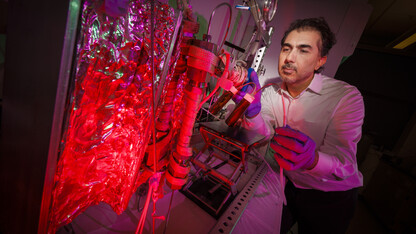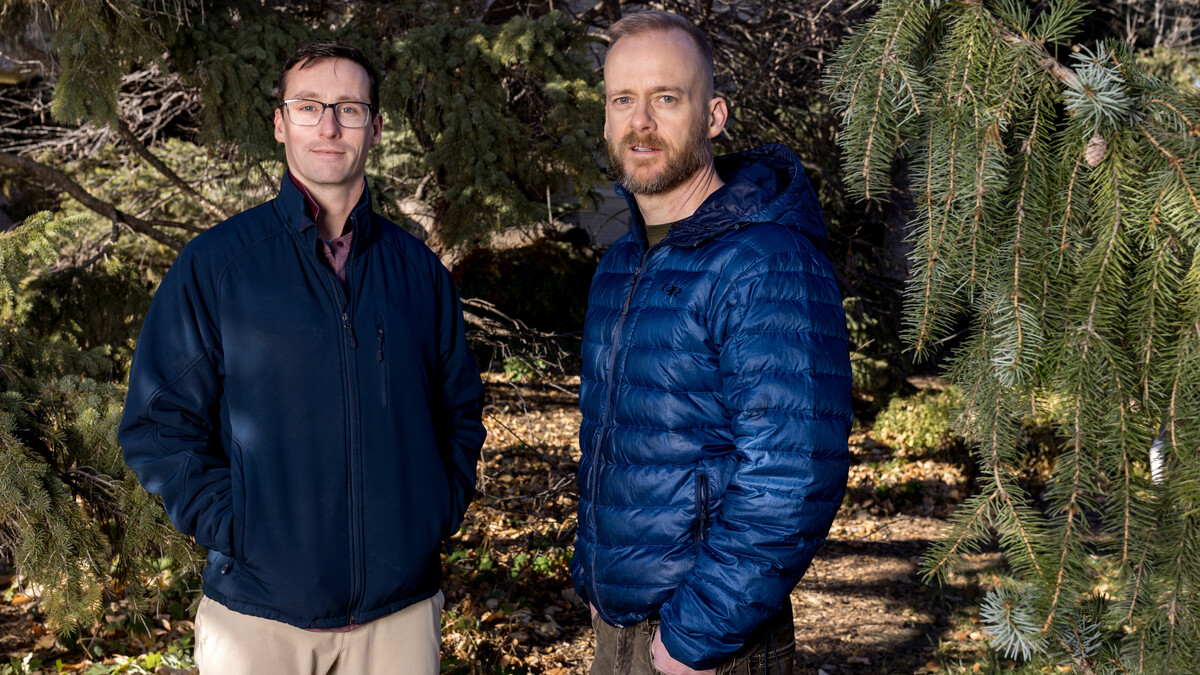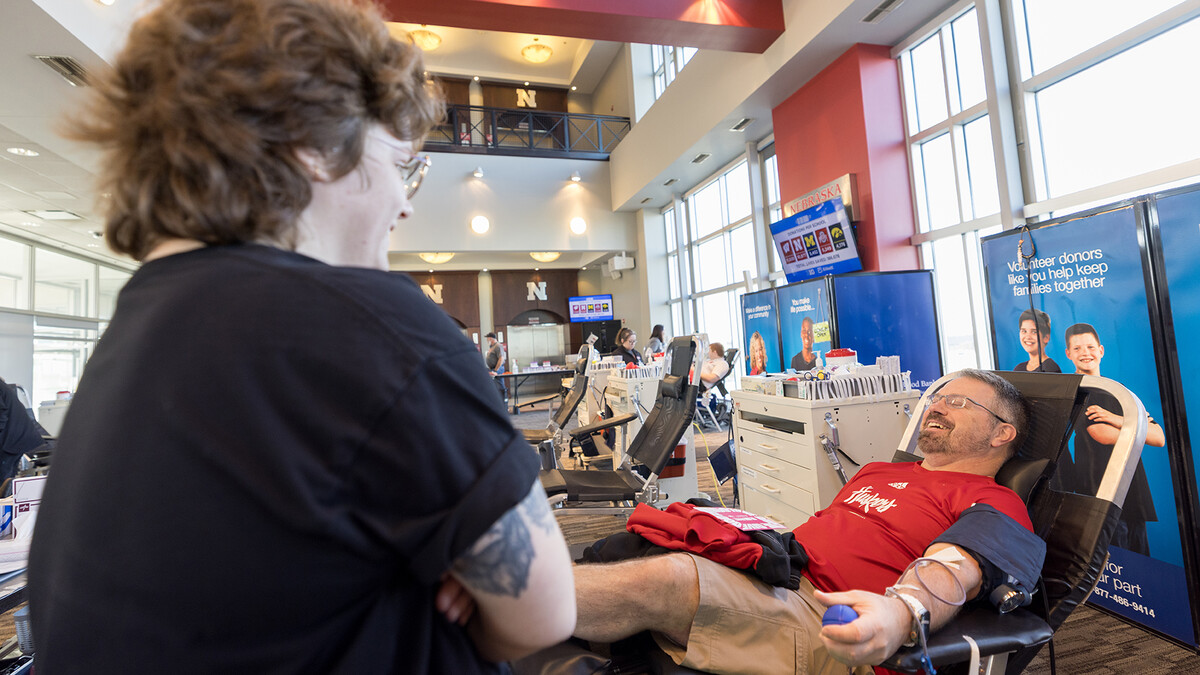
A 200-square-foot slab of seemingly ordinary concrete sits just outside the Peter Kiewit Institute as snowflakes begin parachuting toward Omaha on a frigid afternoon in late December.
The snow accumulates on the grass surrounding the slab and initially clings to the concrete, too. But as the minutes pass and the snow begins melting from only its surface, the slab reveals its secret: Like razors, stoves and guitars before it, this concrete has gone electric.
Its designer, UNL professor of civil engineering Chris Tuan, has added a pinch of steel shavings and a dash of carbon particles to a recipe that has literally been set in concrete for centuries. Though the newest ingredients constitute just 20 percent of Tuan’s otherwise standard concrete mixture, they conduct enough electricity to melt ice and snow in the worst winter storms while remaining safe to the touch.
Tuan’s research team is demonstrating the concrete’s de-icing performance to the Federal Aviation Administration during a testing phase that runs through March 2016. If the FAA is satisfied with the results, Tuan said the administration will consider scaling up the tests by integrating the technology into the tarmac of a major U.S. airport.
“To my surprise, they don’t want to use it for the runways,” Tuan said. “What they need is the tarmac around the gated areas cleared, because they have so many carts to unload – luggage service, food service, trash service, fuel service – that all need to get into those areas.
“They said that if we can heat that kind of tarmac, then there would be (far fewer) weather-related delays. We’re very optimistic.”
A unique bridge that resides about 15 miles south of Lincoln has given Tuan reason to feel confident. In 2002, Tuan and the Nebraska Department of Roads made the 150-foot Roca Spur Bridge the world’s first to incorporate conductive concrete. Inlaid with 52 conductive slabs that successfully de-iced its surface during a five-year trial run, the bridge exemplifies the sort of targeted site that Tuan envisions for the technology.
“Bridges always freeze up first, because they’re exposed to the elements on top and bottom,” Tuan said. “It’s not cost-effective to build entire roadways using conductive concrete, but you can use it at certain locations where you always get ice or have potholes.”
Potholes often originate from the liberal use of salt or de-icing chemicals that can corrode concrete and contaminate groundwater over time, Tuan said, making the conductive concrete an appealing alternative with lower operating and maintenance costs. The power required to thermally de-ice the Roca Spur Bridge during a three-day storm typically costs about $250 – several times less than a truckload of chemicals, he said.
Tuan said the conductive concrete could also prove feasible for high-traffic intersections, exit ramps, driveways and sidewalks. Yet the technology offers another, very different application that doesn’t even require electric current.
Catching the next wave
By replacing the limestone and sand typically used in concrete with a mineral called magnetite, Tuan has shown that the mixture can also shield against electromagnetic waves. The electromagnetic spectrum includes the radiofrequency waves transmitted and received by cell phones, which Tuan said could make the concrete mixture useful to those concerned about becoming targets of industrial espionage.
Using the magnetite-embedded concrete, Tuan and his colleagues have built a small structure in their laboratory that demonstrates the material’s shielding capabilities.
“We invite parties that are interested in the technology to go in there and try to use their cell phones,” said Tuan, who has patented his design through NUtech Ventures. “And they always receive a no-service message.”
While Tuan’s collaborations have him dreaming big about the future of conductive concrete, he’s currently enjoying its benefits much closer to home.
“I have a patio in my backyard that is made of conductive concrete,” he said with a laugh. “So I’m practicing what I preach.”
Tuan developed the concrete with the assistance of Lim Nguyen, associate professor of electrical and computer engineering; Bing Chen, professor of electrical and computer engineering; and Sherif Yehia, a professor at the American University of Sharjah who earned his doctorate in civil engineering at UNL. The FAA is currently funding the team’s research, which has also received past support from the Nebraska Department of Roads.








